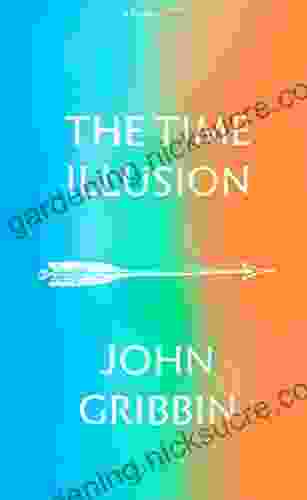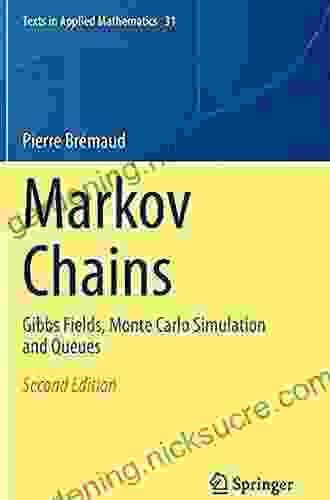Manual of Embryo Culture in Human Assisted Reproduction: A Comprehensive Guide

The Manual of Embryo Culture in Human Assisted Reproduction is a comprehensive guide to the methods and techniques used in the laboratory culture of human embryos. It was first published in 1995 by the International Federation of Fertility Societies (IFFS) and has since become the standard reference for embryologists and other professionals working in the field of assisted reproductive technologies (ART).
5 out of 5
| Language | : | English |
| File size | : | 6395 KB |
| Text-to-Speech | : | Enabled |
| Screen Reader | : | Supported |
| Enhanced typesetting | : | Enabled |
| Print length | : | 124 pages |
The manual provides detailed instructions on all aspects of embryo culture, from the preparation of culture media to the cryopreservation of embryos. It also includes chapters on embryo selection, embryo transfer, and the management of complications.
The Manual of Embryo Culture is an essential resource for anyone involved in the care of patients undergoing ART. It is a valuable tool for embryologists, reproductive endocrinologists, nurses, and other healthcare professionals.
History of Embryo Culture
The first attempts to culture human embryos in vitro were made in the early 1900s. However, it was not until the development of in vitro fertilization (IVF) in the late 1970s that embryo culture became a routine part of ART.
Early embryo culture techniques were based on the use of simple culture media that contained essential nutrients and growth factors. However, these media were not optimal for the development of human embryos, and many embryos failed to survive or develop normally.
In the 1980s, researchers developed more sophisticated culture media that were specifically tailored to the needs of human embryos. These media contained a complex mixture of nutrients, growth factors, and other molecules that were essential for embryo development.
The development of improved culture media led to a significant increase in the success rates of IVF and other ART procedures. Today, embryo culture is an essential part of ART, and it is used to help millions of couples conceive children.
Methods of Embryo Culture
There are two main methods of embryo culture: static culture and dynamic culture.
Static culture
In static culture, embryos are cultured in a small drop of culture medium that is placed in a culture dish. The culture dish is then incubated in a specialized incubator that provides the embryos with the appropriate temperature, humidity, and gas levels.
Static culture is a relatively simple and inexpensive method of embryo culture. However, it can be difficult to control the environment of the embryos, and the embryos may be exposed to harmful factors such as toxins or bacteria.
Dynamic culture
In dynamic culture, embryos are cultured in a small chamber that is continuously perfused with fresh culture medium. This method provides the embryos with a more controlled and consistent environment, and it reduces the risk of exposure to harmful factors.
Dynamic culture is a more complex and expensive method of embryo culture than static culture. However, it is often preferred for the culture of embryos that are at risk of developmental problems.
Applications of Embryo Culture in ART
Embryo culture is used in a variety of ART procedures, including:
* In vitro fertilization (IVF): IVF is a procedure in which eggs are fertilized in the laboratory and the resulting embryos are cultured for several days before being transferred to the uterus. * Intracytoplasmic sperm injection (ICSI): ICSI is a procedure in which a single sperm is injected directly into an egg. The resulting embryo is then cultured for several days before being transferred to the uterus. * Preimplantation genetic diagnosis (PGD): PGD is a procedure in which embryos are tested for genetic abnormalities before being transferred to the uterus. This procedure can help to prevent the transmission of genetic diseases to children. * Embryo cryopreservation: Embryo cryopreservation is a procedure in which embryos are frozen and stored for future use. This procedure can help to preserve fertility in patients who are undergoing cancer treatment or other procedures that may damage their reproductive organs.
Embryo Selection
One of the most important aspects of embryo culture is embryo selection. Embryo selection is the process of choosing the embryos that are most likely to implant and develop into healthy pregnancies.
Embryo selection is based on a variety of factors, including:
* Embryo morphology: The morphology of an embryo refers to its appearance under a microscope. Embryos that have a normal morphology are more likely to implant and develop into healthy pregnancies. * Embryo cell number: The number of cells in an embryo is an indicator of its developmental stage. Embryos that have the correct number of cells for their developmental stage are more likely to implant and develop into healthy pregnancies. * Embryo fragmentation: Embryo fragmentation refers to the presence of broken or damaged cells in an embryo. Embryos with a high degree of fragmentation are less likely to implant and develop into healthy pregnancies.
Embryo selection is a complex process, and there is no single set of criteria that can be used to select the best embryos. However, by considering the factors listed above, embryologists can increase the chances of selecting embryos that will implant and develop into healthy pregnancies.
Embryo Transfer
Embryo transfer is the process of transferring embryos from the culture dish to the uterus. Embryo transfer is typically performed 3-5 days after fertilization.
The embryo transfer procedure is relatively simple and takes only a few minutes. The embryos are placed in a thin catheter that is inserted through the cervix and into the uterus. The embryos are then gently expelled from the catheter into the uterus.
After embryo transfer, the patient will be asked to rest for a few hours. Most patients will experience some cramping and bloating after embryo transfer, but these symptoms usually resolve within a few days.
Management of Complications
A variety of complications can occur during embryo culture, including:
* Embryo arrest: Embryo arrest is a condition in which an embryo stops developing. Embryo arrest can be caused by a variety of factors, including genetic abnormalities, environmental factors, and culture media problems. * Embryo degeneration: Embryo degeneration is a condition in which an embryo breaks down and dies. Embryo degeneration can be caused by a variety of factors, including genetic abnormalities, environmental factors, and culture media problems. * Embryo contamination: Embryo contamination is a condition in which an embryo is contaminated with bacteria or other microorganisms. Embryo contamination can be caused by a variety of factors, including contamination of the culture media or the culture dish.
Embryo culture complications can be prevented by following proper laboratory procedures and using high-quality culture media. If a complication does occur, it is important to identify the cause and take steps to prevent it from recurring.
The Manual of Embryo Culture in Human Assisted Reproduction is an essential resource for anyone involved in the care of patients undergoing ART. It is a valuable tool for embryologists, reproductive endocrinologists, nurses, and other healthcare professionals.
The manual provides detailed instructions on all aspects of embryo culture, from the preparation of culture media to the cryopreservation of embryos. It also includes chapters on embryo selection, embryo transfer, and the management of complications.
By following the guidelines in the Manual of Embryo Culture, embryologists can increase the chances of successful ART procedures and help more couples conceive children.
5 out of 5
| Language | : | English |
| File size | : | 6395 KB |
| Text-to-Speech | : | Enabled |
| Screen Reader | : | Supported |
| Enhanced typesetting | : | Enabled |
| Print length | : | 124 pages |
Do you want to contribute by writing guest posts on this blog?
Please contact us and send us a resume of previous articles that you have written.
 Fiction
Fiction Non Fiction
Non Fiction Romance
Romance Mystery
Mystery Thriller
Thriller SciFi
SciFi Fantasy
Fantasy Horror
Horror Biography
Biography Selfhelp
Selfhelp Business
Business History
History Classics
Classics Poetry
Poetry Childrens
Childrens Young Adult
Young Adult Educational
Educational Cooking
Cooking Travel
Travel Lifestyle
Lifestyle Spirituality
Spirituality Health
Health Fitness
Fitness Technology
Technology Science
Science Arts
Arts Crafts
Crafts DIY
DIY Gardening
Gardening Petcare
Petcare Roselyn Teukolsky
Roselyn Teukolsky Gregory J Privitera
Gregory J Privitera Eric I Karchmer
Eric I Karchmer Paul Johnson
Paul Johnson Justine Brooks Froelker
Justine Brooks Froelker Subsequent Edition Kindle Edition
Subsequent Edition Kindle Edition Martha Menchaca
Martha Menchaca David Cheng
David Cheng 8th Edition Kindle Edition
8th Edition Kindle Edition Richard Adams
Richard Adams Edward Rosenfeld
Edward Rosenfeld J Michael Leger
J Michael Leger Skye Genaro
Skye Genaro Kristi K Hoffman
Kristi K Hoffman Carol Stock Kranowitz
Carol Stock Kranowitz Brennan Barnard
Brennan Barnard A R Bernard
A R Bernard 1st Ed 2016 Edition Kindle Edition
1st Ed 2016 Edition Kindle Edition Caroline Porter Thomas
Caroline Porter Thomas L S Boos
L S Boos David Lloyd Kilmer
David Lloyd Kilmer 3rd Edition Kindle Edition
3rd Edition Kindle Edition Marisha Pessl
Marisha Pessl Eric Haseltine
Eric Haseltine Edward Frenkel
Edward Frenkel Elizabeth Sims
Elizabeth Sims Theodore X O Connell
Theodore X O Connell 2nd Edition Kindle Edition
2nd Edition Kindle Edition Chris Dietzel
Chris Dietzel Jeremy Desilva
Jeremy Desilva Anthony Arvanitakis
Anthony Arvanitakis Juno Dawson
Juno Dawson Gina Rae La Cerva
Gina Rae La Cerva David Kushner
David Kushner Margaret Littman
Margaret Littman Simon G Thompson
Simon G Thompson Ziemowit Wojciechowski
Ziemowit Wojciechowski Janetti Marotta
Janetti Marotta Shelby Hailstone Law
Shelby Hailstone Law Collins Gcse
Collins Gcse John Coleman
John Coleman Jiichi Watanabe
Jiichi Watanabe Bernard Rosner
Bernard Rosner Oliver Theobald
Oliver Theobald 2005th Edition Kindle Edition
2005th Edition Kindle Edition Alice Ginott
Alice Ginott 4th Edition Kindle Edition
4th Edition Kindle Edition Breanna Lam
Breanna Lam Oscar Wegner
Oscar Wegner Tom Pyszczynski
Tom Pyszczynski Susan Walker
Susan Walker Alessa Ellefson
Alessa Ellefson Leonardo Trasande
Leonardo Trasande Rick Gurnsey
Rick Gurnsey Christopher Mcdougall
Christopher Mcdougall David Beaupre
David Beaupre Max Domi
Max Domi P G Maxwell Stuart
P G Maxwell Stuart Tyler Vanderweele
Tyler Vanderweele Temple Grandin
Temple Grandin Brian Thompson
Brian Thompson J D Salinger
J D Salinger Jonathan Ross
Jonathan Ross Mohamed Elgendy
Mohamed Elgendy Andrea Wulf
Andrea Wulf Miranda Castro
Miranda Castro Rifujin Na Magonote
Rifujin Na Magonote James Diego Vigil
James Diego Vigil Richard Bromfield
Richard Bromfield Alec Crawford
Alec Crawford 7th Edition Kindle Edition
7th Edition Kindle Edition Theodor W Adorno
Theodor W Adorno Richard Ania
Richard Ania Mark V Wiley
Mark V Wiley 50minutos Es
50minutos Es Nate G Hilger
Nate G Hilger Josh Mulvihill
Josh Mulvihill Bruno Latour
Bruno Latour Laura Bright
Laura Bright Mary H K Choi
Mary H K Choi Jong Chul Ye
Jong Chul Ye Glenn N Levine
Glenn N Levine Karen Myers
Karen Myers Betty Crocker
Betty Crocker Meik Wiking
Meik Wiking Ulla Sarmiento
Ulla Sarmiento Freda Mcmanus
Freda Mcmanus Karl Morris
Karl Morris Brenda Dehaan
Brenda Dehaan Buddy Martin
Buddy Martin Geri Ann Galanti
Geri Ann Galanti Steven D Levitt
Steven D Levitt Natasha Preston
Natasha Preston Sadie Radinsky
Sadie Radinsky Bill Reif
Bill Reif Jordan Ifueko
Jordan Ifueko Peter Dewhurst
Peter Dewhurst Patrick E Mcgovern
Patrick E Mcgovern Starley Talbott
Starley Talbott Rashad Jennings
Rashad Jennings Jay Cassell
Jay Cassell Naomi Scott
Naomi Scott Amy Chua
Amy Chua William Regal
William Regal Tony Horton
Tony Horton Muata Ashby
Muata Ashby Gregory A Boyd
Gregory A Boyd Kate Spencer
Kate Spencer Marcia Verduin
Marcia Verduin Clint Malarchuk
Clint Malarchuk Thomas Wentworth Higginson
Thomas Wentworth Higginson Michael Geheran
Michael Geheran Lesli Richards
Lesli Richards Jacqueeia Ferguson
Jacqueeia Ferguson Robert Venditti
Robert Venditti Sam Irwin
Sam Irwin 2012th Edition Kindle Edition
2012th Edition Kindle Edition Claire Sierra
Claire Sierra Emily A Duncan
Emily A Duncan A Digger Stolz
A Digger Stolz Seymour Simon
Seymour Simon 5th Edition Kindle Edition
5th Edition Kindle Edition Whit Honea
Whit Honea Porter Fox
Porter Fox Heather Demetrios
Heather Demetrios Kenny Casanova
Kenny Casanova Jo Frost
Jo Frost Elizabeth Wenk
Elizabeth Wenk Tasha Dunn
Tasha Dunn Kevin Paul
Kevin Paul John Kreiter
John Kreiter Garrett Grolemund
Garrett Grolemund John Collins
John Collins Kristine Setting Clark
Kristine Setting Clark Alan Jacobs
Alan Jacobs Suzie Cooney
Suzie Cooney Lenora Ucko
Lenora Ucko Daphne Adler
Daphne Adler Terence N D Altroy
Terence N D Altroy James Mcnicholas
James Mcnicholas Nadav Snir
Nadav Snir Tom Lyons
Tom Lyons Yan Shen
Yan Shen Samantha Lovely
Samantha Lovely Alden Jones
Alden Jones Cynthia Bourgeault
Cynthia Bourgeault Brian Kent
Brian Kent Duy Tran
Duy Tran Leon Anderson
Leon Anderson Bryan Smith
Bryan Smith Martin Mobraten
Martin Mobraten Josh Elster
Josh Elster Kristen Riecke
Kristen Riecke Heather Rain Mazen Korbmacher
Heather Rain Mazen Korbmacher Charles Seife
Charles Seife Stephen P Anderson
Stephen P Anderson Sam Goulden
Sam Goulden John Gookin
John Gookin Chris I Naylor
Chris I Naylor Terence Grieder
Terence Grieder Dan Wingreen
Dan Wingreen Debra Barnes
Debra Barnes Manhattan Prep
Manhattan Prep Diane Duane
Diane Duane Robert Ferguson
Robert Ferguson Robert Peter Gale
Robert Peter Gale Michaela Stith
Michaela Stith Patricia O Quinn
Patricia O Quinn Steve Garnett
Steve Garnett Nick Winkelman
Nick Winkelman Dervla Murphy
Dervla Murphy L Ulloque
L Ulloque 1st English Ed Edition Kindle Edition
1st English Ed Edition Kindle Edition Elizabeth Bradfield
Elizabeth Bradfield Lucas Whitecotton
Lucas Whitecotton Jay Wilkinson
Jay Wilkinson Cindy Kennedy
Cindy Kennedy Roger Gordon
Roger Gordon Patricia S Potter Efron
Patricia S Potter Efron Christy Jordan
Christy Jordan Robert Thurston
Robert Thurston Amy Ogle
Amy Ogle Gary S Thorpe
Gary S Thorpe Kate Usher
Kate Usher Patricia Stevens
Patricia Stevens A Christine Harris
A Christine Harris Marie Louise Von Franz
Marie Louise Von Franz Billie Jean King
Billie Jean King Emma Dalton
Emma Dalton Andy Charalambous
Andy Charalambous Gershon Ben Keren
Gershon Ben Keren Gianni La Forza
Gianni La Forza Sloane Mcclain
Sloane Mcclain Ben Egginton
Ben Egginton Lin Pardey
Lin Pardey Justin Bower
Justin Bower Kennedy Achille
Kennedy Achille Louis Liebenberg
Louis Liebenberg Jason Curtis
Jason Curtis Z Justin Ren
Z Justin Ren Andrew Maraniss
Andrew Maraniss Jenifer Fox
Jenifer Fox Kyla Stone
Kyla Stone Fata Ariu Levi
Fata Ariu Levi Andrew Shapland
Andrew Shapland Kerri Maniscalco
Kerri Maniscalco Janet Sasson Edgette
Janet Sasson Edgette Ricki E Kantrowitz
Ricki E Kantrowitz Peter Cossins
Peter Cossins Dalai Lama
Dalai Lama Steve Kantner
Steve Kantner George Pendle
George Pendle Tracy Gharbo
Tracy Gharbo Jeffrey A Greene
Jeffrey A Greene 3rd Ed Edition Kindle Edition
3rd Ed Edition Kindle Edition A C Davison
A C Davison Leonard Pellman
Leonard Pellman Elizabeth D Hutchison
Elizabeth D Hutchison Jack M Bloom
Jack M Bloom Wong Kiew Kit
Wong Kiew Kit Deanne Howell
Deanne Howell Michael Clarke
Michael Clarke Mauricio Cabrini
Mauricio Cabrini Louis Stanislaw
Louis Stanislaw Dr Danny Penman
Dr Danny Penman Patrick Lange
Patrick Lange Stewart Smith
Stewart Smith Andrew Weber
Andrew Weber Mark Hatmaker
Mark Hatmaker Adam Silvera
Adam Silvera Herbert Feigl
Herbert Feigl Terrence Real
Terrence Real Jamie Hand
Jamie Hand Riddleland
Riddleland Joe Cuhaj
Joe Cuhaj Donna M Mertens
Donna M Mertens Melissa Cheyney
Melissa Cheyney Nancy Keene
Nancy Keene Natalie Smith
Natalie Smith Eric Dominy
Eric Dominy Thomas R Baechle
Thomas R Baechle Robert Bauval
Robert Bauval Syougo Kinugasa
Syougo Kinugasa Jim Burns
Jim Burns Michael Romano
Michael Romano Joseph Chilton Pearce
Joseph Chilton Pearce Howard Mudd
Howard Mudd Olszewski Marie Erin
Olszewski Marie Erin Christopher Lakeman
Christopher Lakeman Theris A Touhy
Theris A Touhy Brooklyn James
Brooklyn James Gregory Collins
Gregory Collins Heather Job
Heather Job Robert Mcentarffer
Robert Mcentarffer Patrick Viafore
Patrick Viafore Emma Lord
Emma Lord Lois Duncan
Lois Duncan Lars Behnke
Lars Behnke Kelly Skeen
Kelly Skeen Nnedi Okorafor
Nnedi Okorafor Sherry Monahan
Sherry Monahan E Bruce Goldstein
E Bruce Goldstein Manuel De La Cruz
Manuel De La Cruz Jessica Shortall
Jessica Shortall Joe Chilson
Joe Chilson Monica Sorrenson
Monica Sorrenson Evan Brashier
Evan Brashier Icon Digital Publishing
Icon Digital Publishing Dinokids Press
Dinokids Press Tim R Wolf
Tim R Wolf Justin Hammond
Justin Hammond Aubrey Clayton
Aubrey Clayton Marty Bartholomew
Marty Bartholomew Dr Katayune Kaeni
Dr Katayune Kaeni L Madison
L Madison Theresa Cheung
Theresa Cheung Greta Solomon
Greta Solomon Laurie Forest
Laurie Forest Paul Martin
Paul Martin Pat Dorsey
Pat Dorsey Nathalie Dupree
Nathalie Dupree Kerry Fraser
Kerry Fraser Russell Miller
Russell Miller Keith Siragusa
Keith Siragusa Bernard Cornwell
Bernard Cornwell Raymond H Thompson
Raymond H Thompson Robert A Johnson
Robert A Johnson Neal Bascomb
Neal Bascomb Iris Bohnet
Iris Bohnet Mimi Lemay
Mimi Lemay Tok Hui Yeap Rd Csp Ld
Tok Hui Yeap Rd Csp Ld Tom Mchale
Tom Mchale Ernest Shackleton
Ernest Shackleton Jasmine Greene
Jasmine Greene Apsley Cherry Garrard
Apsley Cherry Garrard Deepak Chopra
Deepak Chopra Sandra Mizumoto Posey
Sandra Mizumoto Posey Andrew Collins
Andrew Collins Grant Thompson
Grant Thompson Aly Madhavji
Aly Madhavji Maureen Johnson
Maureen Johnson Micah Goodman
Micah Goodman Eloise Jarvis Mcgraw
Eloise Jarvis Mcgraw Pamela Adams
Pamela Adams Peter Wohlleben
Peter Wohlleben Jozef Nauta
Jozef Nauta Mitch Rubman
Mitch Rubman Chase Williams
Chase Williams Patrick Hunt
Patrick Hunt Lareina Rule
Lareina Rule Mark Gregston
Mark Gregston Steve Magness
Steve Magness Leigh Calvez
Leigh Calvez Mike Tyson
Mike Tyson Rowan Ricardo Phillips
Rowan Ricardo Phillips Robert Pondiscio
Robert Pondiscio Bob Welch
Bob Welch Dominik Hartmann
Dominik Hartmann Harry Middleton
Harry Middleton 1st Edition Kindle Edition
1st Edition Kindle Edition Kekla Magoon
Kekla Magoon 4th Edition Kindle Edition With Audio Video
4th Edition Kindle Edition With Audio Video Bonnie Scott
Bonnie Scott Allan Mundsack
Allan Mundsack Ellen Sue Turner
Ellen Sue Turner Eva Feder Kittay
Eva Feder Kittay Erika Bornman
Erika Bornman John A Yoegel
John A Yoegel Cassandra Johnson
Cassandra Johnson Prerna Lal
Prerna Lal Jacquetta Hawkes
Jacquetta Hawkes Jeff Gill
Jeff Gill Jillian Dodd
Jillian Dodd John Gribbin
John Gribbin Jamaica Stevens
Jamaica Stevens A C Grayling
A C Grayling Kelly Slater
Kelly Slater Tony Hernandez Pumarejo
Tony Hernandez Pumarejo Monte Burch
Monte Burch Jasper Godwin Ridley
Jasper Godwin Ridley Jean Clottes
Jean Clottes Bookrags Com
Bookrags Com Michael Alvear
Michael Alvear Christa Orecchio
Christa Orecchio G I Gurdjieff
G I Gurdjieff Patricia Moore Pastides
Patricia Moore Pastides Al Ford
Al Ford Dr Brenda Stratton
Dr Brenda Stratton Don Fink
Don Fink Bobby Blair
Bobby Blair 006 Edition Kindle Edition
006 Edition Kindle Edition Chris Lehto
Chris Lehto Raymond Buckland
Raymond Buckland Michael W Ford
Michael W Ford James D Long
James D Long Diamond Wilson
Diamond Wilson Lj Rivers
Lj Rivers William A Dembski
William A Dembski Hong Chen
Hong Chen Leslie Leyland Fields
Leslie Leyland Fields Joseph E Garland
Joseph E Garland Nathan Jendrick
Nathan Jendrick Geoffrey West
Geoffrey West Frank Sargeant
Frank Sargeant Andre Norton
Andre Norton Justin Doyle
Justin Doyle Michael S Gazzaniga
Michael S Gazzaniga John Iceland
John Iceland Gayle Jervis
Gayle Jervis Jon Dunn
Jon Dunn Barbara Klein
Barbara Klein Paul Deepan
Paul Deepan Ellen Levitt
Ellen Levitt Shonna Slayton
Shonna Slayton 6th Edition Kindle Edition
6th Edition Kindle Edition Chris Froome
Chris Froome Vibrant Publishers
Vibrant Publishers Mei Fong
Mei Fong Debra Pascali Bonaro
Debra Pascali Bonaro Claudio De Castro
Claudio De Castro Bree Moore
Bree Moore Susan E Cayleff
Susan E Cayleff Gail Craswell
Gail Craswell Claire Baker
Claire Baker Sheryl Crow
Sheryl Crow Bruce Watson
Bruce Watson John Hands
John Hands Eli Boschetto
Eli Boschetto Chris Stewart
Chris Stewart Andrew G Marshall
Andrew G Marshall Dan Blackburn
Dan Blackburn Jason Miller
Jason Miller Christoph Delp
Christoph Delp Naomi Feil
Naomi Feil Miko Flohr
Miko Flohr George W E Nickelsburg
George W E Nickelsburg Carl J Sindermann
Carl J Sindermann Jd Brown
Jd Brown Barnett Rich
Barnett Rich Katie J Trent
Katie J Trent Lee Smolin
Lee Smolin Stefan Hofer
Stefan Hofer Robert K Tyson
Robert K Tyson Nikki Grimes
Nikki Grimes Broccoli Lion
Broccoli Lion Sarah Templeton
Sarah Templeton Joe Oliver
Joe Oliver Lewis Henry Morgan
Lewis Henry Morgan Bertolt Brecht
Bertolt Brecht Greg Midland
Greg Midland Edyta Roszko
Edyta Roszko 50minutes Com
50minutes Com Dustyn Roberts
Dustyn Roberts Elaine Beaumont
Elaine Beaumont Tami Lynn Kent
Tami Lynn Kent Linda A Roussel
Linda A Roussel Dan Falk
Dan Falk J Morgan Mcgrady
J Morgan Mcgrady Robert S Mueller
Robert S Mueller Filipe Masetti Leite
Filipe Masetti Leite Mark Brazil
Mark Brazil David Simkins
David Simkins John Green
John Green Liesbet Collaert
Liesbet Collaert Dave Gerr
Dave Gerr Katie M John
Katie M John
Light bulbAdvertise smarter! Our strategic ad space ensures maximum exposure. Reserve your spot today!

 Frank ButlerUnveiling the Time Illusion: An Immersive Literary Journey into the Enigma of...
Frank ButlerUnveiling the Time Illusion: An Immersive Literary Journey into the Enigma of... Derrick HughesFollow ·15.7k
Derrick HughesFollow ·15.7k Jackson BlairFollow ·18.1k
Jackson BlairFollow ·18.1k Dylan HayesFollow ·19.5k
Dylan HayesFollow ·19.5k Ryan FosterFollow ·9.8k
Ryan FosterFollow ·9.8k Jacob FosterFollow ·15.9k
Jacob FosterFollow ·15.9k Douglas FosterFollow ·11.7k
Douglas FosterFollow ·11.7k Charles BukowskiFollow ·19.4k
Charles BukowskiFollow ·19.4k Richard SimmonsFollow ·7.6k
Richard SimmonsFollow ·7.6k

 Finn Cox
Finn CoxA Comprehensive Guide for Budding Inventors and Backyard...
For those with a restless mind and a...

 Forrest Reed
Forrest ReedThe Ultimate Shopper's Guide to Purchasing Weight Lifting...
Are you looking...

 Dillon Hayes
Dillon HayesThe Chemical Choir: Unveiling the Enchanting Symphony of...
In the enigmatic realm of science, where...

 Ryūnosuke Akutagawa
Ryūnosuke AkutagawaStumbling Thru: Hike Your Own Hike
In the realm of outdoor adventures,...

 Terry Pratchett
Terry PratchettUnlock Your Math Skills: A Comprehensive Guide to Chenier...
Math plays a vital role in...
5 out of 5
| Language | : | English |
| File size | : | 6395 KB |
| Text-to-Speech | : | Enabled |
| Screen Reader | : | Supported |
| Enhanced typesetting | : | Enabled |
| Print length | : | 124 pages |











